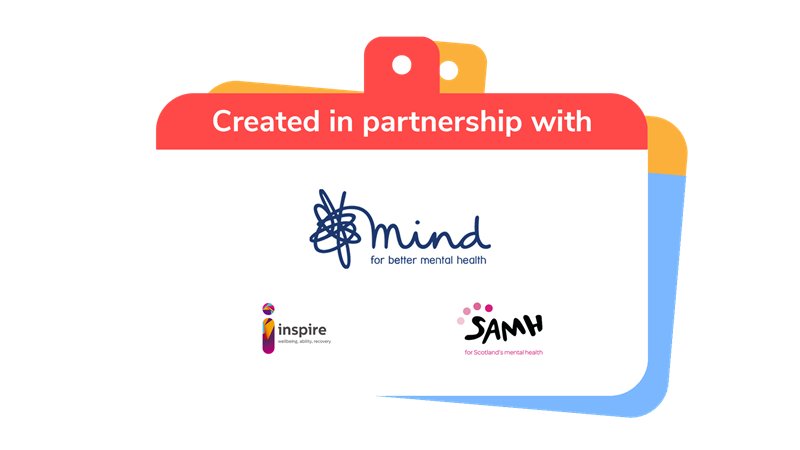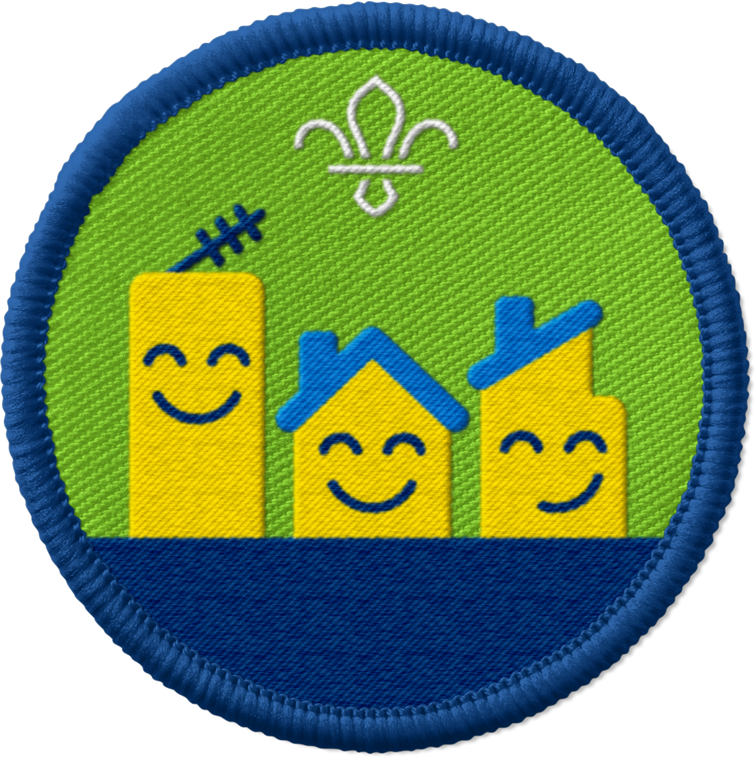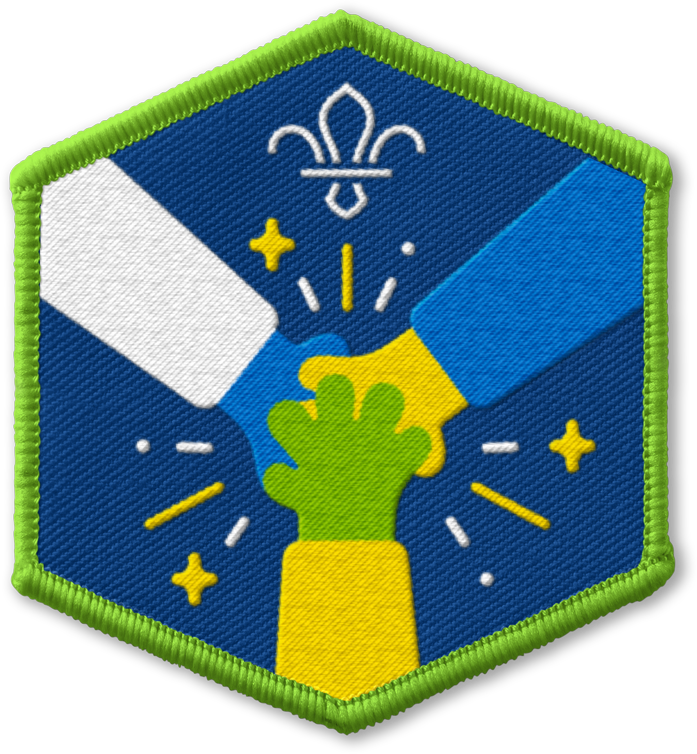
Learn about emotions through different colours
You’ll need
- Paint brushes
- A4 paper
- Paint (red, yellow, green and blue)
Before you begin
- Use the safety checklist to help you plan and risk assess your activity. Additional help to carry out your risk assessment, including examples can be found here. Don’t forget to make sure all young people and adults involved in the activity know how to take part safely.
- Make sure you’ll have enough adult helpers. You may need some parents and carers to help if you’re short on helpers.
Planning this activity
- Put the paints into pots. Each group will need one colour. It’s best if everyone has their own paintbrush.
Story time
- Everyone should sit in a circle.
- Someone should read the story I believe in me by Jess Connett. Make sure you save a copy before the session.
- After reading the story, everyone should take some time to reflect on it as a group. We’ve included some questions to help you reflect in the pink box below.
When Matt’s self-esteem was low, he didn’t feel like he was clever.
He stopped trying in maths lessons, because he thought he’d never be any good at maths.
He also worried about the way he looked. He stopped wearing clothes he liked, because he thought no-one would be interested in him.
Aneesa used to have little confidence in herself. Her mum and her friends all said she had a gift for writing but she felt embarrassed by it. She used to hide her stories and hope her English teacher wouldn’t read her work out loud.
Is there anything you’ve found difficult, or worried you’re not good enough at?
Matt found a couple of new friends who dressed how he liked to. When he told them he was struggling with maths, they offered to help him with any problems he was stuck on.
To build up her confidence, Aneesa stuck messages and pictures on her walls to remind her that she is good at lots of things.
She keeps a list of nice comments people make about her writing, so she can read them when she feels unsure of herself.
What has helped you regain your confidence, or feel better about yourself?
Now Matt dresses how he wants, and feels good about it. He also finds it easier to keep trying in maths lessons, even when he’s finding things difficult.
Although Aneesa still doesn’t want to read her stories out loud in class, she feels confident enough to submit a story to a national competition. She’s really proud of how much her confidence has grown.
By Jess Connett
Offering support for this activity
- You could look out for key dates in the calendar that you could plan your talk around, such as World Mental Health Day or Children's Mental Health Week.
- This might be the first time that a young person has explored the issue of emotions, feelings, mental health or thought about speaking with someone about this. If a young person shares their own mental health problems, let them know they can talk to you afterwards and that they can get support from Childline (call 0800 1111 or go to childline.org.uk).
- Remember to follow the ‘Young People First’ code of practice (the Yellow Card) in any conversations, and read our guidance on supporting mental health in Scouts.
Make a mood mural
- Gather everyone together. Explain that you’re going to learn about different feelings using colours.
- Ask everyone to get into four groups.
- Give each group a colour, either red, blue, green, or yellow.
- Each group needs one colour of paint, some brushes, and some paper. They should find a space to sit together with their equipment.
- Explain that in this activity, each colour represents an emotion or a feeling. Red is angry, blue is sad, green is calm, and yellow is happy. You might want to use other words people are familiar with too, such as mad, cross, or upset.
- Each group should think about the feeling that matches their colour. They should paint things that make them feel that emotion. For example, the red group should use their red paint to paint things that make them feel angry. You should encourage the groups to think of different things that might make them feel that way. People can paint as many or as few things as they like.
- Place each group’s paintings in a space. You’ll want four clear areas, so each colour is in a defined area. People will be running or moving between the paintings, so you may want to put a stop line around them to avoid them being trampled on.
Pick your picture
- Everyone should spread out around the space.
- Call out different events or situations that might cause different emotions. For example, getting a present, losing a game, singing songs, or exploring outdoors.
- When each event or situation has been called out, everyone should run to the emotion that the event or situation would make them feel. For example, if it would make them feel happy, they should run to the yellow paintings. You might need to remind people that there isn’t one right answer here. It’s OK if people disagree about how they’d feel.
- You could ask a few people why they chose the colour they did and why that scenario made them feel that way.
- Keep calling out situations and events, until everyone has been to each emotion a few times.
We all make a rainbow
- Explain to everyone that it’s normal to feel different feelings at different times – there are no bad feelings. Mind has some great information on different feelings and mental health problems.
- Remind everyone that lots of people were playing the game – and they sometimes had different feelings in response to the same event - and that’s OK.
- Explain that it’s important to look out for other people and help them when they might feel sad or angry.
- Ask people about things they could do to help people when they’re feeling angry or sad.
- Create a colour wall in your meeting space with the different colours from the activity. You could use this to help people let you know how they’re feeling on different days.
Reflection
This activity is designed to help young people explore different feelings. It shows them that everyone feels different things at different times and reassures them that that’s OK.
Story time
- What is your favourite thing to do to make you feel better?
- How can you help your friends out when they need it?
Mood mural
- Was it easy to think of things that made people feel the emotion their group was given? Did some groups find it easier than others?
- Did people enjoy painting things to show different feelings?
Pick your picture
- Was it easy for everyone to decide which feeling each event would make them feel?
- Did everyone always feel the same?
Safety
All activities must be safely managed. You must complete a thorough risk assessment and take appropriate steps to reduce risk. Use the safety checklist to help you plan and risk assess your activity. Always get approval for the activity, and have suitable supervision and an InTouch process.
- If people are finding it too tricky to match pictures to emotions, they could paint something else with their colour. You can still use their pictures for pick your picture.
- People act out the emotions as they move to the different colours.
- If anyone’s colour-blind, you may need to use different colours or different materials. You could also write the emotions in large letters (or draw clear pictures) to label each area.
- People could act out the emotion they’d feel rather than moving to the different areas.
All Scout activities should be inclusive and accessible.
Try to remember the different emotions as you pay attention to how friends and family are feeling. Can you help them out or support them?
Encourage young people to be honest and choose pictures and emotions that are true for them. Understanding that different people react to things differently is important for developing empathy and looking out for each other.


